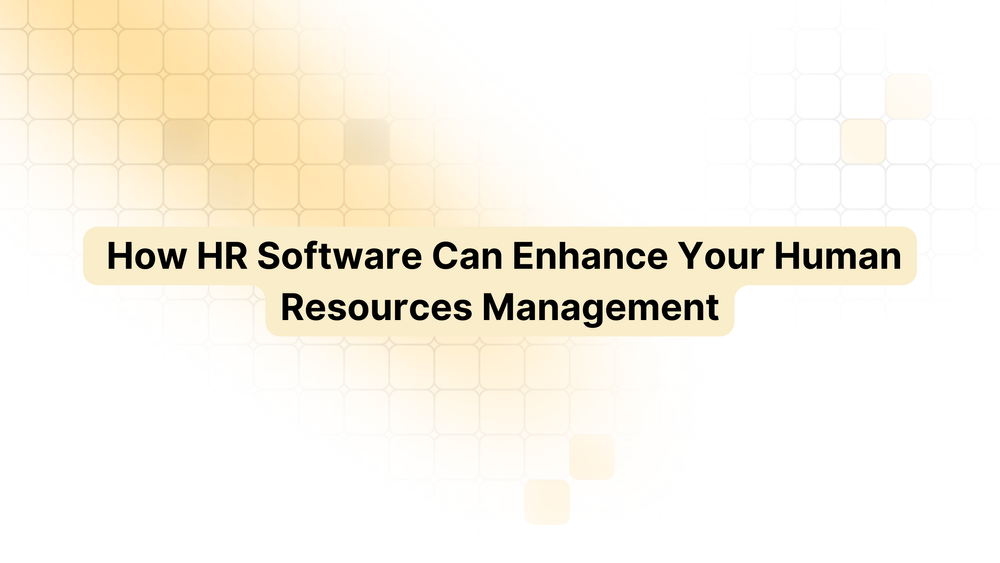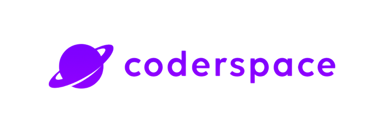
Enhancing HR Management with Advanced Software Solutions
Nowadays, HR resource management plays an acute role in any organization. HR Departments are considered as the life wire in any organization as they maintain the organization’s human capital making sure that they are productive and happy.
With the rise of technology HR software has become an essential tool in enhancing HR management processes.
In this article, we will discuss how they can revolutionize your HR, with examples of the HR software, and their importance, features, and their significance for employee onboarding. ✋
Overview of HR Software Solutions

All of these exist in the form of varied software solutions that target different areas of HR management such as recruitment, payroll, performance appraisals, staff retention and legal requirements.
For small businesses or start-ups, it would be more advisable to look for cheaper ways due to the limited resources that such businesses or start-ups may possess. There are several free HR software options available that offer essential features.
Key Benefits of Implementing HR Software
The integration of HR software into your organizational processes can help to transform several facets of the HR division to your advantage.
1. Increased Efficiency and Productivity
HR software automates repetitive tasks, reducing the time HR professionals spend on administrative duties.
This allows them to focus on strategic initiatives that drive organizational growth. Some of the automated functions include payroll, benefits and timekeeping, and the use of technology in such processes increases the overall output.
2. Improved Data Management and Accuracy
With the help of HR software, all such data about the employees can be stored in one place and can be accessed easily. This improves efficiency, saves time that would have been spent manually feeding the data into the computer and eliminates potential errors compared to manual entry of data.
3. Enhanced Employee Experience
A seamless HR experience is crucial for employee satisfaction and retention. HR software provides self-service portals where employees can access their information, request time off, and view benefits. This empowerment leads to a better overall employee experience.
4. Compliance and Risk Management
Staying compliant with labour laws and regulations is critical for any organization. HR software helps ensure compliance by automatically updating policies and maintaining records. This has a chance of minimising penalties for non-compliance and affiliate legal challenges.
5. Scalability
As businesses grow, their HR needs evolve. Primarily, there is the advantage of scalability when it comes to implementing the HR software since this can be customized to include more features as the company grows.
This ensures that the HR system is flexible enough to be upgraded to match the growing complexity, and capacity to handle a larger workforce.
Core Features to Look for in HR Software

1. Employee Database Management
A centralized employees’ database must be a central part of any operating business nowadays. It should enable the compilation and storage of detailed employee details such as bio-data, employment history, records, and remuneration among others.
2. Payroll Management
Payroll is one of the core activities of HRM. Consider software that helps with processing the payroll, estimating and meeting the taxes, and filing compliance reports.
It is also advantageous to integrate with payroll systems due to time and attendance systems.
3. Time and Attendance Tracking
Effective time and attendance tracking features are essential for managing employee hours, scheduling, and ensuring accurate payroll processing. Features such as clock-in/clock-out, leave management, and shift scheduling are crucial.
4. Recruitment and Applicant Tracking
Incorporation of recruitment features leads to a better way of hiring abilities. Some features that should be sought include tracking systems because they help to track job vacancies, candidates, and interviews.
5. Performance Management
Performance management tools can also be used to schedule and conduct performance reviews and to set and offer feedback on employee’s goals.
This assists in implementing performance management, praising high performers, dealing with underperformers, and nurturing talent.
6. Benefits Administration
Managing employee benefits can be complex. HR software should offer benefits administration features that allow employees to enroll in benefits programs, view plan details, and make changes during open enrollment periods.
7. Employee Self-Service Portal
HR self-service portal to which employee has access to manage self-data information, check pay stubs, personal requests for leave, and organizational policies. This lowers the workload for HR officers and increases the esteem of workers because they spend less time completing paperwork.
8. Reporting and Analytics
Another very important area is the exploration of possibilities and transactional realities at multiple levels.
Probably the most important function is the reporting and analysis function, as it should be software with easily customizable and comprehensive reports on different HR data and parameters, including turnover, absenteeism and other performance indicators.
Streamlining Employee Onboarding with HR Software
Onboarding is another significant stage in the employee lifecycle since it determines the first impressions that formulate the disposition of the employee toward the company. Effective and fast onboarding procedures are associated with high employee retention rates and quick community gain.
1. Automated Onboarding Workflows
HR software can automate the entire recruitment process, from sending offer letters to completing paperwork and training. Automated workflows ensure that no step is missed, ensuring a smooth and consistent recruitment experience.
2. Digital Document Management
Managing paperwork during recruitment can be challenging. HR software allows new hires to fill out and sign documents electronically, reducing the need for physical paperwork and ensuring important documents are stored securely.
3. Training and Development
HR software can integrate with Learning Management Systems (LMS) to provide new hires with training and development resources. This ensures that employees receive the necessary training and quickly become productive members of the team.
4. Communication and Collaboration
Effective communication is crucial during onboarding. HR software often includes communication tools that allow new hires to interact with their teams and managers, ask questions and get feedback. This fosters a sense of belonging and commitment from day one.
5. Performance Tracking and Feedback
HR software can set up performance monitoring and feedback mechanisms for new hires. Regular check-ins and feedback sessions help identify any issues early and ensure that new employees are on the right track.
6. Personalized Onboarding Experiences
Each employee is different and that is why a tailored approach to a hiring a new employee has a huge influence in terms of how engaged the new worker will be with their job. With the help of the solution available in HR software, onboarding steps can be set according to the position, division, and personal requirement of the staff.
7. Compliance and Documentation
Onboarding is a crucial time for employees and it is important for a company to ensure that all employees are aware of employment laws and policies. Through the use of HR software, compliance may be managed efficiently because all the needed papers would be monitored and policy sign-offs and such would have to be recorded.
Final Words
HR software is really effective if used properly as it can make the work of HR managers and the processes themselves more efficient and accurate.
Ranging from administration of new employee orientation, payroll processing, performance analysis and compliance among other facets, HR software solutions meet different aspects of human resource management.
Therefore, you can wisely select the unique HR software that achieves your company’s requirements and goals to effectively organize the HR department’s tasks, improve the employees’ satisfaction, and facilitate organizational development.
Choosing the right human resource software will not only improve the management of human resources but also play a triple effect on the success of any organization.
Remember, if you have a hard time keeping your systems working together, Hirex works seamlessly with your existing HR tools with hundreds of integrations!
Contents
Get a demo
- Quickly find top candidates with smart application management
- Improve team collaboration using built-in communication and workflows
- Offer a smooth candidate experience to strengthen your employer brand
- Count on 24/7 support for a hassle-free hiring process
- Quickly find top candidates with smart application management
- Improve team collaboration using built-in communication and workflows
- Offer a smooth candidate experience to strengthen your employer brand
- Count on 24/7 support for a hassle-free hiring process
"We truly felt the speed difference. Everything was smoother, and candidate feedback was much more positive. It made our jobs easier."

Trusted by 100+ teams
Get Informed,F.A.Q.
Revolutionize your hiring process with our transformative Applicant Tracking System (ATS.)
Suggested Blog Posts

40+ Employee Wellness Statistics

12 Employee Engagement Statistics to Track in 2026
















